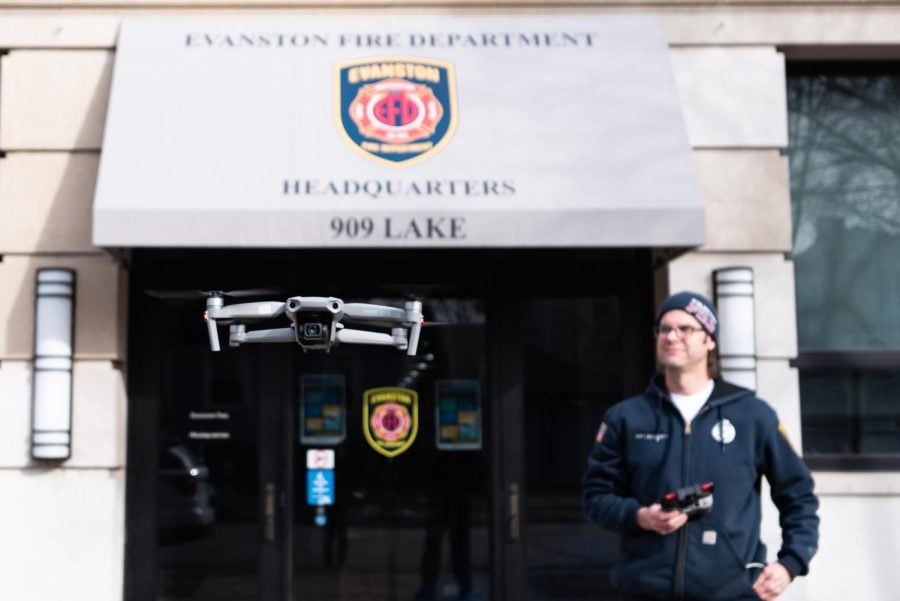Three years after purchase, Evanston’s drone program remains on the ground
Madison Bratley/Daily Senior Staffer
Evanston’s training drone. Worries persist in Evanston about the city’s drone as its future role within public safety remains uncertain.
February 8, 2023
In 2020, the Evanston Police and Fire Departments jointly purchased a drone capable of thermal image-enhanced search and rescue and crowd management, among other functions.
The Unmanned Aerial Vehicle program is meant to increase efficiency during rescue and other operations, according to a police and fire department presentation from 2020. But three years later, the departments have only used the drone once. Activist groups in Chicago and nationwide have raised concerns about drone usage, though EPD Sgt. Scott Sophier, who coordinates the UAV program, said the city will continue to use it on a case-by-case basis.
Sophier said limited staffing prevents the police department from using the drone more frequently.
“We did deploy the drone on an official call for service in 2021 to assist the Skokie Police Department with a missing juvenile who was believed to have possibly entered the water,” he said. “And we’ve trained with the drone.”
He also said the department deployed the drones to several calls, but it arrived after the issues had been resolved by EPD or EFD.
EPD has no plans to use the drone more or less, Sophier said, but rather intends to keep the drone “ready and available with personnel trained to deploy it if and when necessary.”
Evanston’s drone program follows a national trend of police departments purchasing drones, according to the Atlas of Surveillance, a database documenting surveillance technologies used by law enforcement agencies.
Dave Maass, director of investigations at Electronic Frontier Foundation, led the Atlas of Surveillance project. He said the number of U.S. law enforcement agencies using drones grew from a dozen in 2012 to at least 1,220 to date.
While Maass said drones can be beneficial for search and rescue purposes and crime photography, he said he’s worried they can also be used haphazardly.
“What I am definitely concerned about is using drones to surveil people engaged in First Amendment activities, (such as) people protesting,” he said.
He also said the city should maintain transparency around drones, such as keeping a public log of drone activities detailing the times, flight plans and outcomes. The Illinois Freedom from Drone Surveillance Act, however, prohibits EPD from disclosing information gathered by their drone.
Policymakers need to understand how police drones can affect communities unequally, Maass said, and should evaluate whether drones are a good use of public resources.
“Something, for example, that you would want to know is are they using drones in Black neighborhoods more frequently than in other neighborhoods,” he said. “That could be indicative of using technology to further promote racial inequity in policing.”
Charles Johnson, organizing director of Chicago Area Peace Action, said he thinks the drone program should end.
Johnson said he’d like to see Evanston build trust instead of using technology that steers the police department toward the potential for “control, domination surveillance.”
“(The drone) is being treated like this is the future of safety,” he said. “I would encourage the city to consider all the more holistic and community-based types of safety that are available.”
Email: [email protected]
Twitter: @chiarafkim
Related Stories:
— A year after purchase, questions linger around purpose of Evanston’s unused police and fire drone
— Evanston Police Department launches survey to measure public trust, local neighborhood concerns
— EFD considers implementation of mobile integrated healthcare, drones


